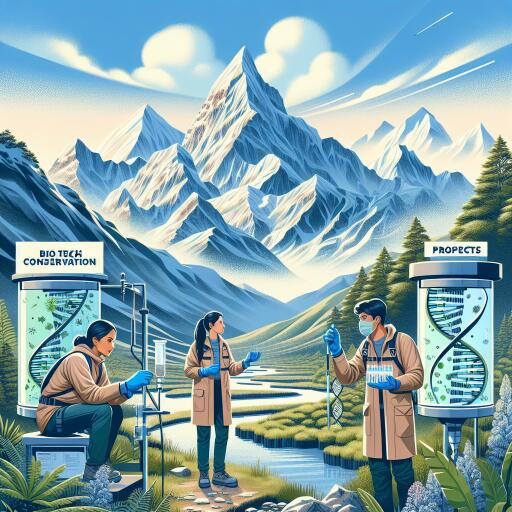
Unlocking the Secrets of Himalayan Biodiversity Through Environmental DNA
In the heart of the Himalayas, a revolutionary approach to biodiversity conservation has emerged, leveraging the power of environmental DNA (eDNA) to unveil the mysteries of aquatic life across several major rivers and wetlands. From the tranquil flows of the Trishuli to the spirited currents of the Karnali, Gandaki, and Mahakali, researchers have embarked on a meticulous journey to map out the aquatic biodiversity that thrives within. This ambitious endeavor has culminated in the creation of Nepal’s inaugural fish DNA reference database, a pivotal resource that was virtually non-existent before this initiative took shape.
The significance of eDNA in these efforts cannot be overstated. Unlike traditional methods, eDNA collection offers a snapshot of the species inhabiting an ecosystem through the genetic material they leave behind, enabling a more detailed and comprehensive understanding of biodiversity. This technique has been instrumental in integrating the eDNA perspective into the Trishuli Assessment Tool, a standardized framework for evaluating freshwater biodiversity with an eye towards sustainable hydropower development. The ongoing mission now extends to the glaciers of Nepal, promising first-time insights into their eDNA profiles.
Meanwhile, in the Indian state of Assam, the Deepor Beel wetland, recognized under the Ramsar Convention for its global ecological importance, stands as a testament to the value of eDNA in monitoring environmental changes. Faced with the dual threats of climate change and human interference, decision-makers have turned to eDNA studies to grasp the wetland’s dynamic ecosystem, a critical step towards safeguarding the livelihoods of the fishing communities it sustains. The pioneering eDNA dataset for Deepor Beel, encompassing both fish species and microorganisms, marks a significant milestone for conservation efforts in northeastern India’s Ramsar-listed sites.
The application of eDNA technology extends beyond wetlands and rivers to the broader Himalayan region. For instance, a comparative study involving eDNA surveys and traditional otter sightings in the Trans-Himalayan Indus river drainage has shed new light on the presence and ecology of Eurasian otters, offering vital cues for crafting holistic conservation strategies tailored to this elusive species.
In Bhutan’s south-central Mangdechhu river basin, a pilot eDNA survey brought to light the presence of endangered and vulnerable species such as the white-bellied heron and the tiger, signaling new avenues for species conservation efforts in the country. However, WWF-Bhutan, which played a key role in this survey, identifies the acute challenges of limited infrastructure, equipment, and expertise in executing eDNA analyses within Bhutan as significant hurdles to be overcome.
Despite the promising applications of eDNA in biodiversity conservation across the Himalayan region, challenges remain. The lack of adequate research infrastructure, expertise in data interpretation, and the relatively high costs of eDNA sampling and testing are obstacles that need resolution. Yet, as eDNA methodologies become more widespread, there is optimism that these barriers will diminish, paving the way for more sustainable conservation practices that can keep pace with the rapidly changing Himalayan ecosystems.





Leave a Reply